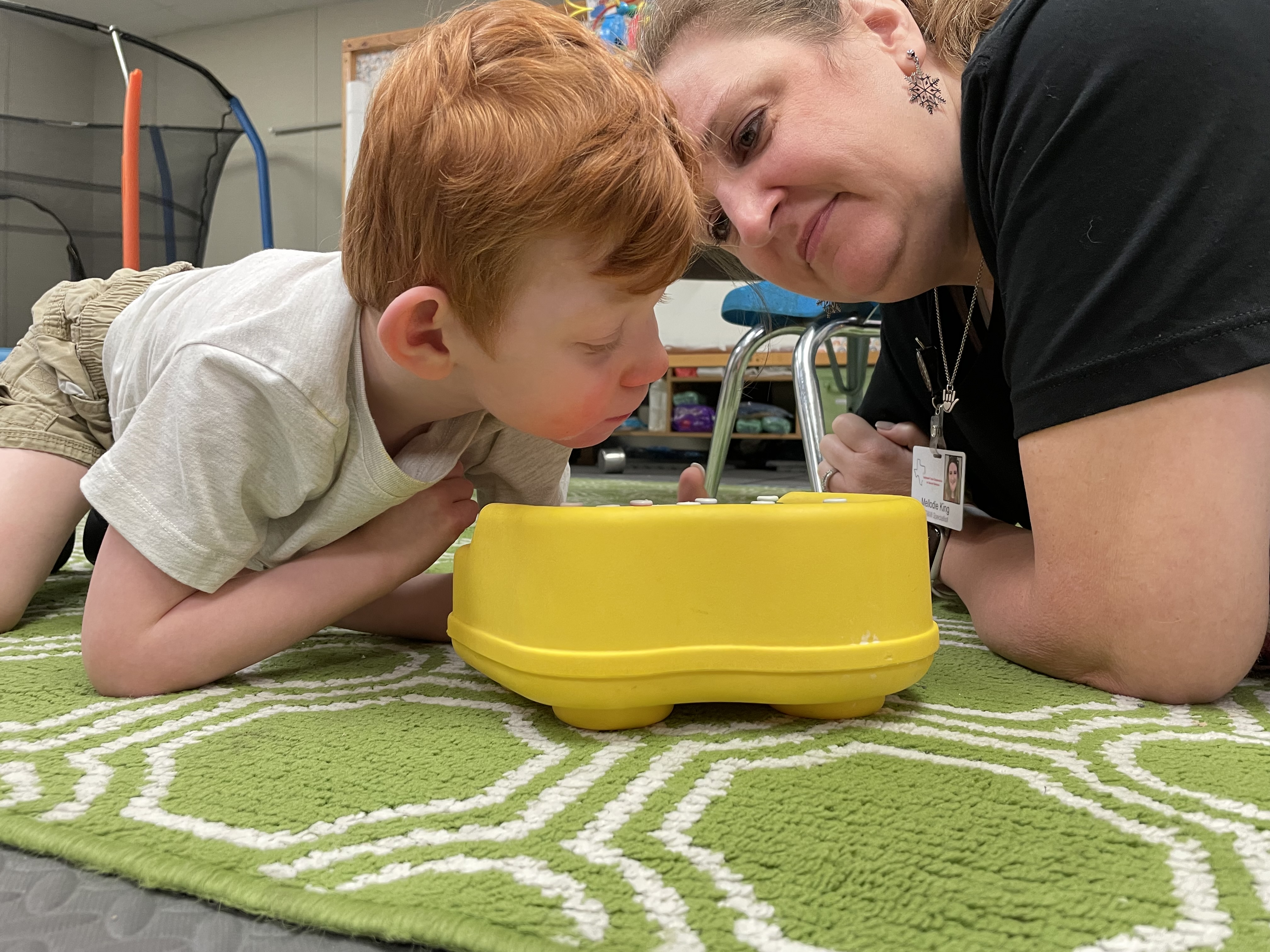Lesson 4 - Building Relationships
A child’s quality of life is not solely measured by how well they meet their educational goals. Building strong, trusting relationships with adults and peers helps to bring joy and meaning to their lives. This lesson focuses on why relationships matter, specific strategies you can use to bond and build trust, and the importance of nurturing peer relationships.
Lesson 4 gives you a solid understanding of why relationships built on trust are integral to a child’s development. For more information, visit the National Center on Deaf-Blindness at nationaldb.org.

Lesson 4 has 3 learning objectives. After completing the lesson, participants should be able to
- Describe how deafblindness impacts bonding and building trust
- Use specific strategies for building a trusting relationship with a child who is deafblind
- Explain why it is vital that children who are deafblind build relationships with their peers
Part 1 - The Impact of Deafblindness on Bonding and Building Trust
In Part 1, you’ll learn how best to prepare for and initiate positive interactions with a child who is deafblind.
Activities
Option 1
You have been asked to come up with a persuasive argument for why it is absolutely critical for children who are deafblind to develop strong, trusting relationships. Write an essay or prepare and give a short presentation that explains your position. Make sure to use specific examples and details.
Option 2
Imagine you are an early intervention provider who is working with a new mom or dad of an infant who is deafblind. The parents tell you they are frustrated because the baby does not seem to make eye contact or respond to their voice. Your job is to develop a plan for how you might approach this situation, including a description of the strategies you would use to help the parents strengthen their bond with their child. For example, what other ways might the baby be responding to their verbal and nonverbal communication? How might the parents build communication with their child into everyday routines?
Part 2 - Bonding and Building Trust
Part 2 provides specific strategies you can use right away to encourage and facilitate ongoing positive interactions with a child who is deafblind.
Activities
Option 1: Collaborative Activity
With partners, role-play how introductions should and should not be done with a child who is deafblind. Assign three parts: One person is the teacher (or family member) and another is the child who is deafblind. A third person plays the role of an adult who is being introduced to the child for the first time. Role-play two scenarios:
- An introduction and initial interaction with the new adult that would not be a positive experience for the child. How might the child react to this experience? When done, discuss why this wasn’t a positive experience and why this approach could harm the relationship between the new adult and the child.
- A positive introduction and initial interaction with the new adult. How might the child react to this experience? When done, discuss why this was a positive experience and how it might enhance the relationship between the new adult and the child.
Option 2
You are observing an adult interacting with a child who is deafblind. You know that the adult recently met the child and is hoping to build a relationship. You notice that the adult is encouraging the child to play with a toy that the child clearly does not like. What advice might you give the adult to better “read” the child’s emotions? Write a short response or prepare to discuss your advice.
Part 3 - The Importance of Peer Relationships
In Part 3, you’ll discover why peer relationships are integral to a child’s well being and how to lay the groundwork for positive peer relationships.
Activities
Option 1
We know that typically, children who are deafblind have good relationships with their parents and other family members, like siblings and grandparents. Prepare a short report or presentation to explain why those relationships are not enough for children who are deafblind. Make sure to include why relationships with peers can be a significant part of a child’s development and quality of life.
Option 2: Collaborative Activity
Imagine you are a 4th-grade teacher, and you would like to have a student who is deafblind and a hearing-sighted student in your class work together to complete a project. The student who is deafblind
- Wears a cochlear implant, so he has some hearing
- Is totally blind in the left eye but can see bright objects and shapes with his right eye
- Has use of his hands, although he needs support to keep them steady and to hold on to objects
- Sits in a chair with a back brace and board
You know it can be helpful to talk with the hearing-sighted peer about the student’s specific communication challenges. Write a paragraph or two that explains what you might tell the hearing-sighted child to prepare them to be an understanding and sensitive partner of their peer who is deafblind.
Option 3: Independent or Collaborative Activity
Observe a child who is deafblind and a peer interacting. Take notes on what you see happening, no matter how slight, that shows they may be connecting and building a relationship.
For example, do you observe the children
- Verbally communicating? Describe how they use their voices (speaking or vocalizing) to interact.
- Non-verbally communicating? Describe the ways they use their hands and/or bodies to gesture or interact.
Observations could occur at a playgroup or in a classroom or other setting. Summarize your observation in a brief written report.
Quiz
Instructors are welcome to use this quiz as-is or adapt it to meet their needs. It can be used to test participants’ knowledge following completion of the module or for pre- and post-test evaluation. To obtain answers to the quiz, instructors should contact support@nationaldb.org.
Additional Resources
Trust and High-Quality Relationships
Information on how good relationships form the basis for learning and quality of life, and how to create trust with children who are deafblind
Building Trusting Relationships: NCDB Practice Guide
A list of the essential components and skills needed to build a trusting relationship
Making Friends and Developing Social Skills
Resources on how parents and educators can help children find ways to interact with one another and provide support for interactions to occur
